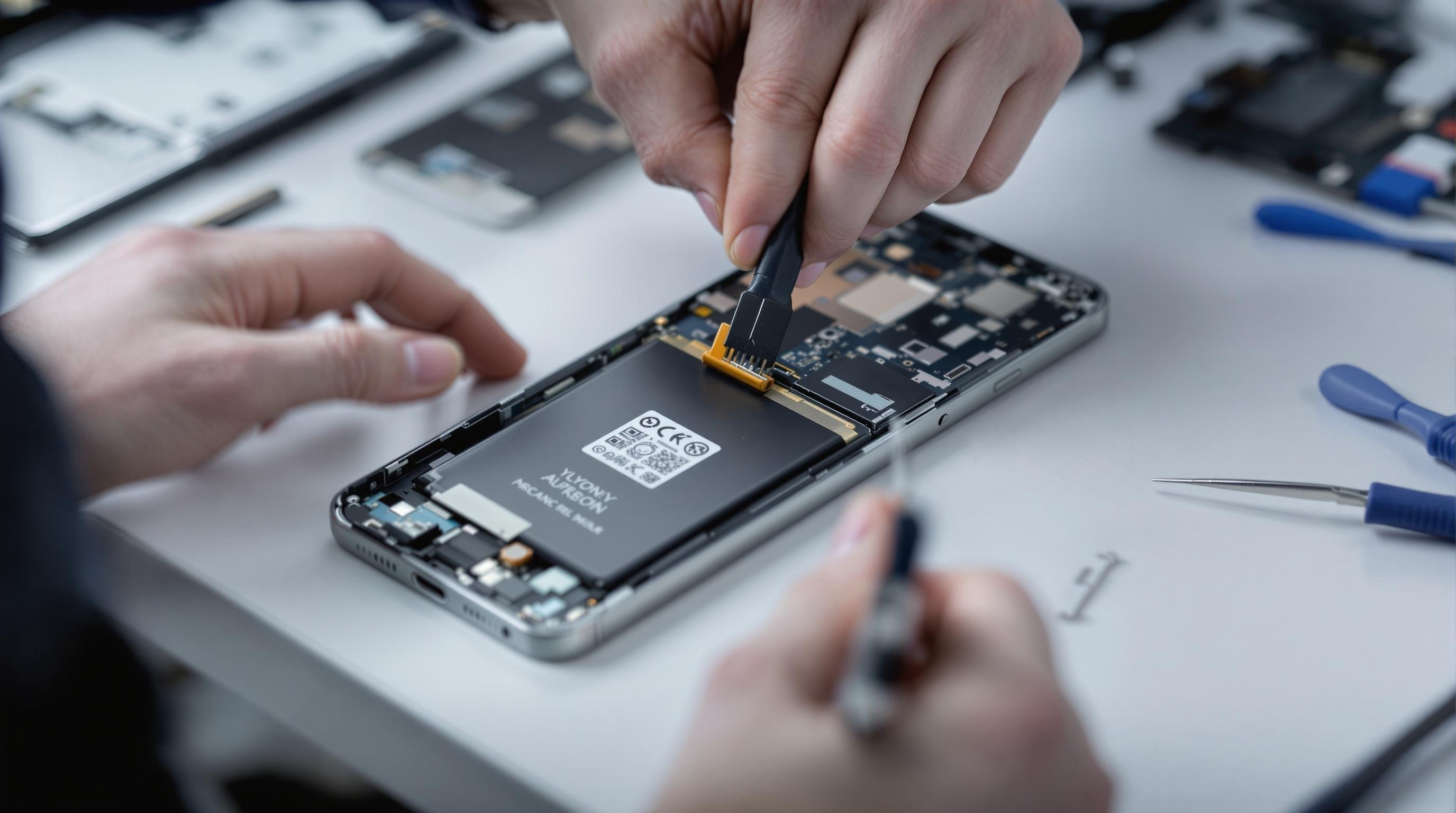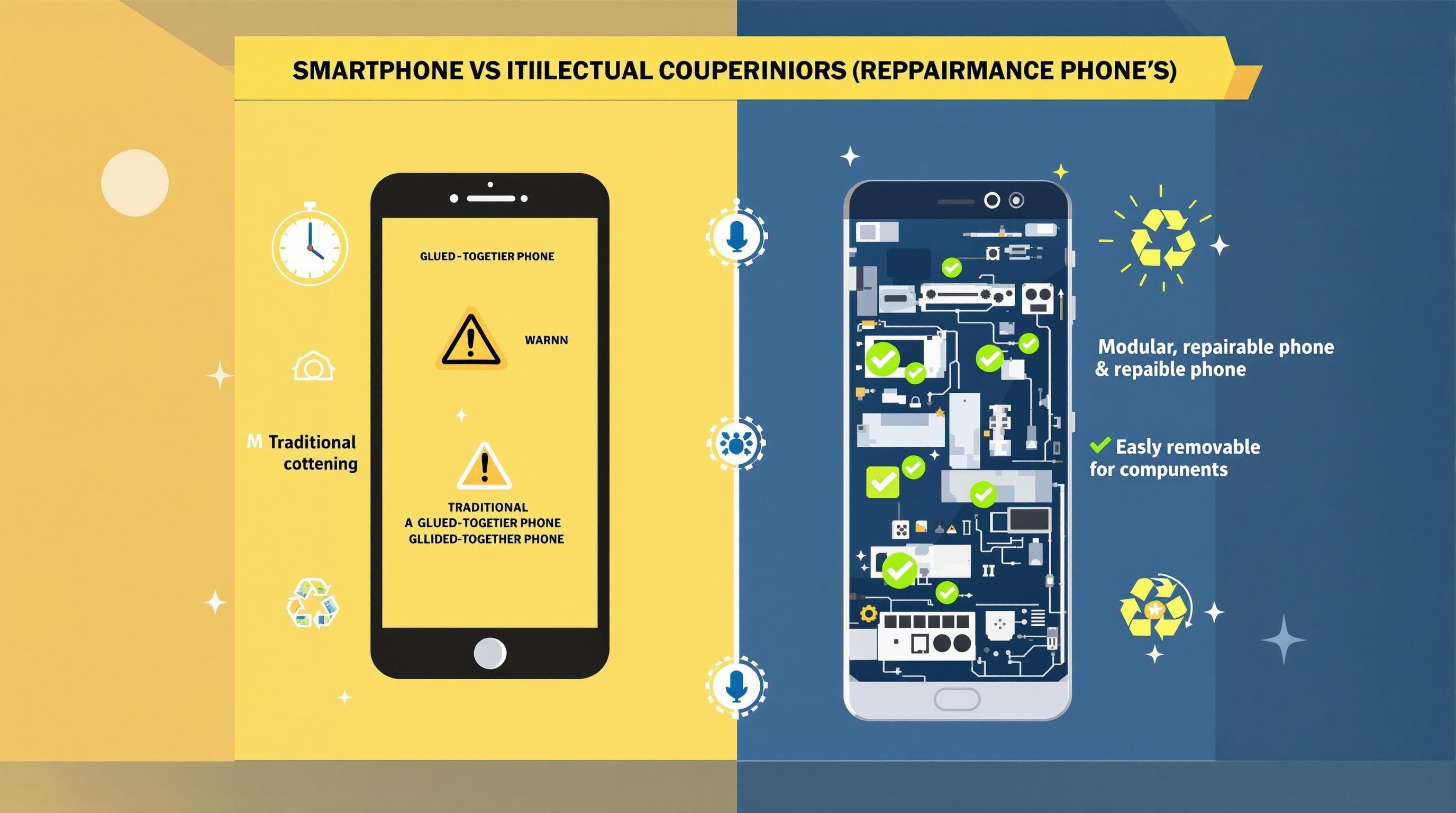
In an era where smartphones have become indispensable tools in our daily lives, the concept of repairability has emerged as a crucial factor in determining the true value and longevity of these devices. While manufacturers often focus on marketing the latest features and specifications, the ability to repair and maintain a smartphone throughout its lifecycle represents a fundamental shift in how we approach technology ownership. Understanding smartphone repairability isn’t merely about fixing broken screens or replacing worn batteries; it encompasses a comprehensive philosophy that considers environmental impact, economic sustainability, and user empowerment.
The modern smartphone market has increasingly gravitated toward sleek, sealed designs that prioritize aesthetics over accessibility. However, this trend has created a significant disconnect between consumer needs and manufacturer priorities. When a smartphone becomes difficult or impossible to repair, users face the stark choice between expensive professional repairs or premature device replacement. This reality has sparked a growing movement toward repairability awareness, with consumers beginning to recognize that a truly premium smartphone should be one that can be maintained and upgraded over time.
The foundation of smartphone repairability rests on several interconnected principles that extend far beyond the initial purchase decision. Design philosophy plays the most significant role, as manufacturers must make conscious choices about how components are integrated, secured, and made accessible. Traditional approaches that rely heavily on adhesives, proprietary fasteners, and integrated components create barriers to repair that can transform minor issues into major expenses. Conversely, designs that prioritize modularity, standard fasteners, and component accessibility enable both professional technicians and skilled users to address problems efficiently and cost-effectively.
Material selection represents another critical aspect of repairability that often goes unnoticed by consumers. Smartphones constructed with durable materials that can withstand the stresses of disassembly and reassembly demonstrate superior long-term value compared to devices that use fragile components prone to damage during repair attempts. The choice between glass and plastic back panels, for instance, has profound implications for repairability, as glass panels often shatter during removal while plastic alternatives typically survive multiple repair cycles.

The emergence of repairability scoring systems has provided consumers with standardized metrics for evaluating smartphone repair-friendliness. These scoring methodologies typically evaluate devices across multiple dimensions, including ease of disassembly, component accessibility, fastener standardization, and parts availability. Understanding how these scores are calculated empowers consumers to make informed decisions based on objective criteria rather than marketing promises or superficial impressions.
Component accessibility represents perhaps the most practical aspect of smartphone repairability, as it directly impacts the feasibility and cost of common repairs. The most frequently serviced smartphone components include displays, batteries, charging ports, and cameras, making their accessibility a primary consideration for repair-conscious consumers. Devices that require extensive disassembly to reach these commonly serviced parts inherently present greater repair challenges and associated costs.
Battery replacement deserves particular attention in repairability discussions, as battery degradation affects virtually all smartphones over time. Devices with easily removable batteries enable users to maintain optimal performance throughout their ownership period, while smartphones with heavily integrated or adhesive-secured batteries often require professional service for what should be routine maintenance. The implications extend beyond convenience, as difficult battery replacement often leads to premature device replacement when battery performance becomes inadequate.
Display repair represents another critical consideration, particularly given the vulnerability of modern smartphone screens to damage. Devices designed with display-first repair priorities enable technicians to address screen damage without extensive internal disassembly, reducing both repair time and potential complications. This design philosophy recognizes that display repairs constitute the most common smartphone service requirement and structures device architecture accordingly.
Fastener standardization might seem like a minor technical detail, but it profoundly impacts repair accessibility and cost. Smartphones that employ standard Phillips or Torx screws enable repairs using commonly available tools, while devices requiring proprietary or specialized fasteners create barriers that limit repair options to authorized service providers. This distinction becomes particularly important for users in regions with limited official support or those seeking cost-effective repair alternatives.
The availability of replacement parts represents a critical but often overlooked aspect of smartphone repairability. Even the most repair-friendly device becomes problematic if components cannot be sourced when needed. Manufacturers’ commitment to parts availability varies dramatically, with some brands maintaining extensive parts catalogs for extended periods while others discontinue component availability shortly after device launch. This reality makes manufacturer parts policies a crucial consideration for consumers prioritizing long-term device sustainability.
Documentation and repair resources form another essential element of the repairability ecosystem. Comprehensive service manuals, detailed disassembly guides, and component diagrams enable both professional technicians and skilled users to perform repairs effectively. Manufacturers who provide these resources demonstrate genuine commitment to device repairability beyond superficial design considerations.
The concept of modular smartphone design represents the pinnacle of repairability philosophy, enabling users to replace or upgrade individual components without affecting the entire device. While few manufacturers have successfully implemented truly modular designs, those that have created devices with remarkable longevity and upgrade potential. These designs challenge conventional smartphone architecture by prioritizing user agency over manufacturing efficiency.
Software considerations also impact smartphone repairability, particularly regarding component authentication and compatibility. Some manufacturers implement software locks that prevent replacement components from functioning properly, effectively creating artificial barriers to repair even when physical replacement is straightforward. Understanding these software limitations becomes crucial for consumers evaluating long-term device sustainability.
The economic implications of smartphone repairability extend far beyond individual repair costs. Repair-friendly devices typically maintain higher resale values due to their extended usable lifespans and lower maintenance costs. This economic advantage compounds over time, as users can defer expensive upgrades while maintaining satisfactory device performance through targeted repairs and component replacements.
Environmental considerations represent another compelling argument for prioritizing repairability in smartphone selection. Devices designed for extended lifecycles through repair and component replacement significantly reduce electronic waste compared to disposable alternatives. This environmental benefit becomes increasingly important as global smartphone adoption continues expanding and environmental consciousness grows among consumers.
The professional repair ecosystem also benefits from improved smartphone repairability, as repair-friendly devices enable independent service providers to compete effectively with manufacturer-authorized channels. This competition typically results in lower repair costs and improved service availability for consumers, creating a positive feedback loop that reinforces the value of repairability-focused design.
Training and skill development represent important considerations for users interested in performing their own smartphone repairs. While some repairs require professional expertise and specialized equipment, many common maintenance tasks can be performed by users with appropriate guidance and tools. The availability of educational resources and community support significantly impacts the practical accessibility of DIY smartphone repair.
Tool requirements vary significantly between smartphone models, with some devices requiring only basic implements while others demand specialized equipment. Understanding the tool requirements for common repairs helps consumers assess the practical feasibility of DIY maintenance and factor these costs into their device selection process.
Quality considerations in replacement parts represent another crucial aspect of smartphone repair success. While genuine manufacturer parts typically offer superior compatibility and longevity, aftermarket alternatives can provide cost-effective solutions for budget-conscious users. Understanding the trade-offs between genuine and aftermarket parts enables informed decision-making based on individual priorities and circumstances.
The timing of smartphone repairs can significantly impact their success and cost-effectiveness. Addressing issues promptly typically results in simpler repairs and better outcomes, while delayed maintenance often leads to compound problems that increase complexity and expense. This reality emphasizes the importance of selecting devices that enable early problem detection and straightforward intervention.
Insurance and warranty considerations interact complexly with smartphone repairability, as some coverage options limit repair choices while others provide flexibility in service provider selection. Understanding these interactions helps consumers make informed decisions about protection plans and repair strategies that align with their priorities and usage patterns.
The future of smartphone repairability appears increasingly promising, as regulatory pressures, environmental concerns, and consumer demand converge to incentivize manufacturer adoption of repair-friendly designs. Right-to-repair legislation in various jurisdictions is beginning to require manufacturers to provide parts, tools, and documentation necessary for device maintenance, potentially transforming industry practices.
Technological advances in materials science, manufacturing techniques, and component integration may also enable new approaches to smartphone repairability that resolve current trade-offs between design elegance and repair accessibility. These developments could usher in an era where premium smartphones seamlessly combine aesthetic appeal with practical maintainability.
| Repairability Factor | Excellent | Good | Fair | Poor |
| Display Access | Screen-first design, minimal disassembly | Accessible after back panel removal | Requires moderate disassembly | Extensive disassembly required |
| Battery Replacement | Tool-free or single screw | Standard screws only | Light adhesive with pull tabs | Heavy adhesive, complex removal |
| Fastener Types | Single standard type | Two standard types | Mixed standard/proprietary | Primarily proprietary |
| Parts Availability | Manufacturer commitment 5+ years | 3-5 years availability | 2-3 years availability | Limited availability |
The evaluation of smartphone repairability requires consideration of multiple interconnected factors that collectively determine a device’s long-term maintainability and sustainability. While no single smartphone excels in every repairability dimension, understanding these factors enables consumers to make informed trade-offs based on their individual priorities and usage patterns.
| Brand Approach | Design Philosophy | Parts Policy | Documentation | Typical Score Range |
| Fairphone | Modular, user-replaceable | Extensive, long-term | Complete manuals | 9-10 |
| Google Pixel | Repair-conscious design | Good availability | Official guides | 6-8 |
| Apple iPhone | Premium materials, mixed | Authorized network | Limited public access | 5-7 |
| Samsung Galaxy | Sealed premium design | Moderate availability | Professional focus | 3-5 |
The smartphone repairability landscape continues evolving as consumer awareness grows and regulatory frameworks develop. Manufacturers increasingly recognize that repairability represents a competitive advantage rather than a burden, leading to gradual improvements in device design and support infrastructure. This evolution suggests that future smartphones may successfully balance aesthetic appeal, performance optimization, and repair accessibility in ways that current devices cannot.
The selection of a repairable smartphone ultimately requires balancing multiple considerations including personal technical comfort levels, local repair resource availability, and long-term usage expectations. While repairability represents an important factor in smartphone selection, it must be evaluated alongside traditional considerations such as performance, features, and price. The most successful approach involves identifying devices that meet functional requirements while offering superior repairability within their category.
For consumers committed to maximizing smartphone longevity through repair and maintenance, investing in appropriate tools, developing basic technical skills, and establishing relationships with competent repair providers can significantly enhance the value proposition of repair-friendly devices. These investments enable users to fully capitalize on the benefits that repairable smartphones offer over their less maintainable counterparts.
The broader implications of smartphone repairability extend beyond individual consumer benefits to encompass environmental sustainability, economic efficiency, and technological innovation. As the smartphone market continues maturing and environmental pressures intensify, repairability is likely to transition from a niche consideration to a mainstream requirement. Consumers who prioritize repairability today position themselves advantageously for this transition while enjoying immediate benefits of extended device lifecycles and reduced ownership costs.
The journey toward widespread smartphone repairability represents a fundamental shift in how we conceptualize technology ownership and sustainability. Rather than viewing smartphones as disposable commodities with predetermined lifespans, the repairability movement promotes a perspective that values long-term utility, environmental responsibility, and user empowerment. This philosophical shift has profound implications for both individual consumers and the broader technology industry, suggesting that the future of smartphones lies not in endless cycles of replacement but in sustainable approaches to innovation and maintenance.
Understanding smartphone repairability empowers consumers to make purchasing decisions that align with their values while maximizing the practical and economic benefits of their technology investments. As this understanding becomes more widespread, it will likely drive industry-wide improvements that benefit all smartphone users regardless of their individual repair ambitions. The ultimate goal is not necessarily for every user to become their own repair technician, but rather to ensure that repair remains a viable and accessible option throughout every smartphone’s functional lifespan.
 smartphones
smartphones


